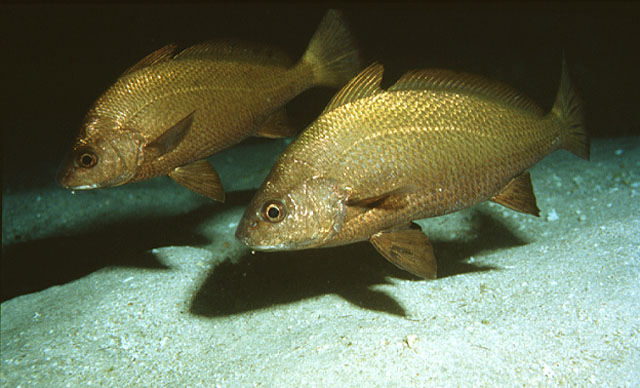| Sciaenidae (Drums or croakers) |
| 80 cm TL (male/unsexed) |
|
demersal; depth range 50 - 300 m |
| Eastern Atlantic: Bay of Biscay to South Africa (Ref. 4373), including the western Mediterranean. Western Indian Ocean: east coast of Africa (Ref. 3490); probably also in the Arabian Sea under synonyms capensis (non Pappe ?), sinuata Day and striata Boulenger. |
|
Dorsal spines (total): 11-11; Dorsal soft rays (total): 25-29; Anal spines: 2-2; Anal soft rays: 7-7. Juveniles with narrow oblique dark and light stripes, becoming obscure in adults (Ref. 4373). |
| Found in mud and sandy bottoms of the shelf and upper slope (Ref. 4780), 14° to 15° C (Ref. 36731). Feed on small shrimps, worms and other bottom invertebrates (Ref. 4780). Sold fresh and dried salted (Ref. 3490). |
|
(Ref. 96402)
|
| harmless |
|
Source and more info: www.fishbase.org. For personal, classroom, and other internal use only. Not for publication.
Page created by Jen, 05.08.02,
php script by kbanasihan 06/09/2010 ,
last modified by
dsantos, 20/08/10

